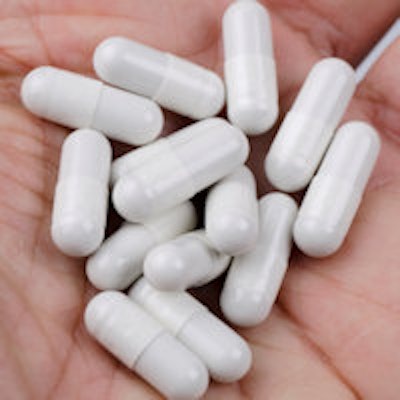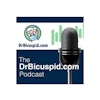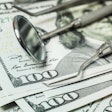
Canadian and New Zealand researchers have found that the amount, or persistence, of a probiotic in a patient's mouth is dose-dependent, and the probiotic's ability to linger in a patient's oral cavity may allow more effective countering of pathogens.
While probiotics are advertised as small factories producing biologically active substances that benefit the host, most probiotics rapidly pass through the oral and digestive tracts following their ingestion, which means that the likelihood of "persistence" at their principal target site, the patient's mouth, is low, the study authors wrote in their 2013 study published by PLOS One. In fact, probiotic bacteria do not generally persist for more than a few hours or days in the oral cavity, according to previous studies.
The long-term effects of this study include the recognition of the persistence of probiotic strains and that it might be possible to engineer specific strains of probiotics, according to lead author Jeremy P. Burton, PhD.
"The study had a couple of key points," Burton wrote DrBicuspid.com in an email. "First, some probiotic strains can actually persist and maybe colonize their site of action. This previously was not thought possible, but we are also starting to see evidence that other probiotic strains used in the gut need their adhesive molecules on their surfaces intact to be able to interact with the host and may explain individuals who are responders or nonresponders to treatment."
"Second, it may be possible to naturally engineer an ideally tailored strain of Streptococcus salivarius for a certain health condition," he stated.
“The ability of a probiotic to persist at the target site likely allows the organism to have a greater impact on the host.”
Burton is the Miriam Burnett Research Chair in Urological Sciences; an assistant professor in the division of urology in the departments of surgery and also microbiology and immunology at Western University in London, Ontario; and a scientist at the Lawson Health Research Institute and Canadian Centre for Human Microbiome and Probiotics Office, also in London.
The researchers' goal was to investigate the effect of different dosage levels of S. salivarius M18 on the persistence of bacteriocin-producing cells. For the study, 75 participants with an average age of 19 years were recruited from a university class. They were randomized and blinded to one of four identical-looking dosage groups taking probiotic lozenges containing 1 x 106 (n = 19), 1 x 107 (n = 20), 1 x 108 (n = 17), or 1 x 109 (n = 19) colony-forming units of S. salivarius M18 per dose.
The subjects used one lozenge per day for 28 days after toothbrushing. Samples of about 1 mL of unstimulated saliva were obtained from each subject at the start of the study and then each week at least 12 hours after a lozenge was taken.
Bacterial pathogens tend to have specific virulence traits that facilitate their attachment and subsequent invasion of oral and intestinal tissue, the study authors wrote. They noted that the location of the oral cavity provides comparatively uncomplicated access for probiotics and sampling to assess their impact. Studies have shown that the microbial composition of saliva is derived from various oral ecosystems, such as the dorsum of the tongue. S. salivarius has an innate capability of binding to and persisting on the tongue dorsum, and some strains release copious quantities of bacteriocins into saliva that could provide a targeted way of removing deleterious bacteria.
During the collection and analysis of the subjects' saliva, persistent low-level dosing "did not appear to lead to cumulative increases in the proportion of the probiotic within the indigenous salivary population," the authors noted. However, they did find that the higher the dosage involved, the higher the level of persistence.
This finding in particular, according to the authors, has implications for the clinical applications of probiotics, which are often recommended to be given daily. The "ability of a probiotic to persist at the target site likely allows the organism to have a greater impact on the host," because most do not colonize the host, they noted.
An important aspect of the study was determining if the probiotic caused any disruption of the indigenous microbiota of healthy subjects, which regulatory agencies view as a negative consequence. While some subjects clearly had a high level of persistence of the probiotic strain, gene-sequence analysis did not show a notable change in the predominant microbial composition, the researchers reported. This finding backed up previous studies and supports the safety of this strain of probiotic.
One of the ongoing frustrations for Burton is that the word probiotic itself isn't used specifically enough.
"The word probiotic is often broadly used out of definition," he said. "By definition (the World Health Organization), a probiotic confers a health benefit to the host when conferred in adequate numbers; otherwise it is just a bacteria. We often hear 'probiotics do or don't work,' and [it] is very frustrating because we must only compare a particular strain, at a specific dose and format to the health outcome, not just one against another or the whole class of treatment as succeeding or failing."
More investigation into specific products is needed, he said.
"There are various products on the market, and it requires some investigation to find out those that have some scientific credibility behind them," Burton said. "For this they must look at the basics of the products touted for oral use (species, strain, dose, and format) to see if it was the same as used in clinical trials where there has been an efficacious outcome."
A number of strains that have oral benefits and are available commercially have been studied and have had research published about them, he noted.
"I believe that in the shift away from potentially microbiome-damaging antimicrobial agents that may be linked to other diseases that we will see a greater emphasis on these oral cavity treatment adjuncts," Burton stated.
When asked if there are certain patients who should not take probiotics, he responded that there are few such patients.
"Very few," Burton said. "There is always a risk given that we are using a live organism, though it is low."
Most probiotics are derived from food-grade sources or, if they are not, should have a significant safety dossier with them, he noted.
"Combining with dental procedures may be an exception to that in some cases, given that we may be introducing bacteria to easily accessible wound sites in untested formats," Burton said. "However, the countering argument is that saliva has relatively high bacterial numbers in it anyway, so if it is consumed in a normal way, e.g., by ingestion, it shouldn't result in increased risk."
While cases have been reported of probiotic strains or bacterial species used as probiotics causing infection, the reality is that quite often there has been some other medical intervention or trauma that has led to the problem, he noted.
"The human microbiota contains huge numbers of bacteria, and billions of doses of probiotics are consumed daily with little side effects," Burton said.















